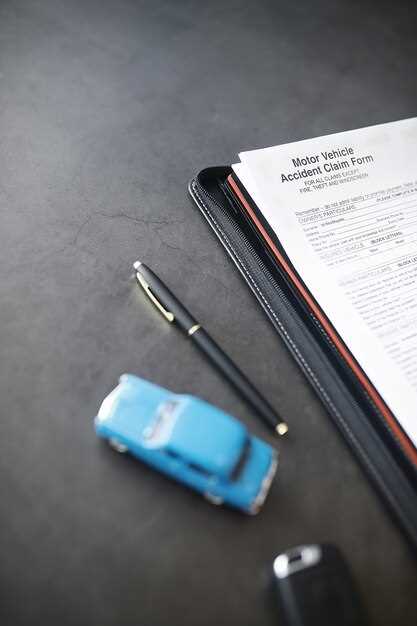
Registering a salvage vehicle can be a complex process, but understanding the requisite legal steps can simplify the journey. A salvage vehicle is typically one that has been declared a total loss by an insurance company, often due to damage from accidents, floods, or other disasters. To legally possess and operate such a vehicle, you’ll need to navigate specific requirements set forth by your state’s Department of Motor Vehicles (DMV).
The first step in registering a salvage vehicle is to ensure that you have all the necessary documentation. This typically includes the vehicle’s title, proof of ownership, and any repair estimates required by the DMV. It’s important to secure an official salvage title from the previous owner or insurance company, as this document indicates the vehicle’s history and status as a salvage.
After gathering the necessary documents, you must submit them to your local DMV for review. This may involve completing specific forms related to the vehicle’s condition and repairs. Depending on your state regulations, you may also need to pass a safety inspection and obtain a rebuilt title before you can register the vehicle for road use. Understanding and following these legal steps ensures a smoother registration process and helps you get your salvage vehicle back on the road legally and safely.
Understanding the Salvage Title Process

The salvage title process is an essential procedure for vehicle ownership transfer when a vehicle has been declared a total loss by an insurance company. When a car is severely damaged due to an accident, flood, or fire, the insurer may categorize it as salvage. This designation changes the vehicle’s status and requires specific steps for registration with the Department of Motor Vehicles (DMV).
To begin the salvage title process, the vehicle owner must obtain a salvage title from the DMV. This document serves as proof that the car has been deemed a total loss. The owner can typically apply for this title through their local DMV office by submitting an application along with the necessary documentation, which may include the vehicle’s original title, any insurance reports detailing the loss, and personal identification.
Once the DMV processes the application, a salvage title will be issued. This title indicates that the vehicle has incurred significant damage and is no longer considered roadworthy without repairs. Importantly, a salvage title reduces the vehicle’s resale value and can impact future insurance coverage.
If the owner intends to repair the vehicle and put it back on the road, the next step is to complete the necessary repairs and have the vehicle inspected. After successfully passing inspection, the owner can apply for a rebuilt title at the DMV, indicating that the vehicle has been satisfactorily restored.
Understanding the salvage title process is crucial for vehicle owners, as it ensures compliance with state regulations and helps avoid potential legal issues. Proper handling of the title and documentation throughout this process ultimately protects both the owner and future buyers of the vehicle.
Documentation Required for DMV Registration

When registering a salvage vehicle with the DMV, it is imperative to gather all necessary documentation to ensure a smooth registration process. The following documents are typically required:
1. Title: You must present the original title of the vehicle, even if it is branded as salvage. This document proves ownership and is essential for the registration process. If the title has been lost, a duplicate must be obtained from the DMV before proceeding.
2. Bill of Sale: A bill of sale outlining the transaction details is often needed. This document should include information about the buyer, seller, date of sale, and purchase price.
3. Inspection Certificate: Many states require a salvage vehicle to undergo an inspection to verify its condition and ensure it meets safety and emissions standards. Documentation of this inspection must be submitted to the DMV.
4. Proof of Identity: Valid identification, such as a driver’s license or state ID, is mandatory for the registration process. This ensures that the person registering the vehicle is indeed the owner.
5. Insurance Verification: Most states require proof of insurance coverage before a vehicle can be registered. You must provide documents confirming that the vehicle is insured as per state regulations.
6. Application for Registration: Filling out the DMV’s application for vehicle registration is a crucial step. Ensure that all information is accurate and complete to avoid delays.
Collecting these documents beforehand will streamline the process of registering a salvage vehicle at the DMV, saving time and reducing the potential for complications. Always check with your local DMV for any additional requirements specific to your state.
Common Pitfalls to Avoid When Registering Salvage Vehicles
When registering salvage vehicles, it is crucial to be aware of common pitfalls that can complicate the process. One significant issue is failing to obtain the correct documentation from the insurance company or previous owner. Without the right paperwork, such as a salvage title, the DMV may deny your registration request.
Another frequent mistake is overlooking the importance of proper inspections. Many states require salvaged vehicles to undergo a rigorous inspection before they can be registered. Skipping this step can result in delays or even the inability to receive a title.
Ensure that your application is comprehensive and accurate. Missing information or incorrect details can lead to administrative errors, causing frustration and additional waiting time at the DMV. Always double-check your forms before submission.
Be cautious about purchasing a vehicle with an upgraded or “rebuilt” title without understanding its history. Some states might have different regulations regarding the registration of such vehicles, which could affect your ability to register and insure the vehicle later on.
Lastly, keep in mind the fees associated with both the salvage title and registration process. Underestimating the financial obligations can lead to unexpected delays in completing your registration. Make sure to budget for title fees, inspection costs, and any potential fines.



